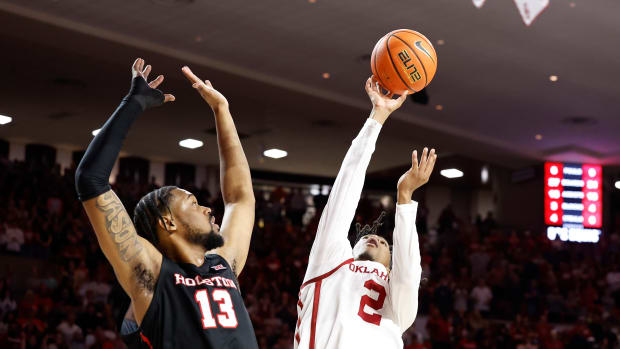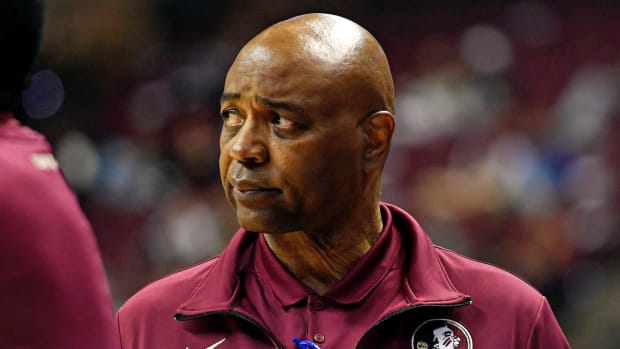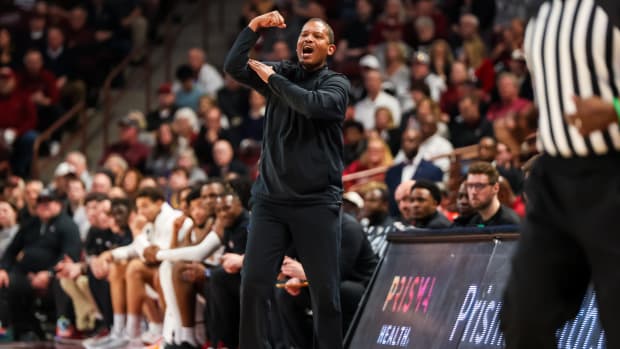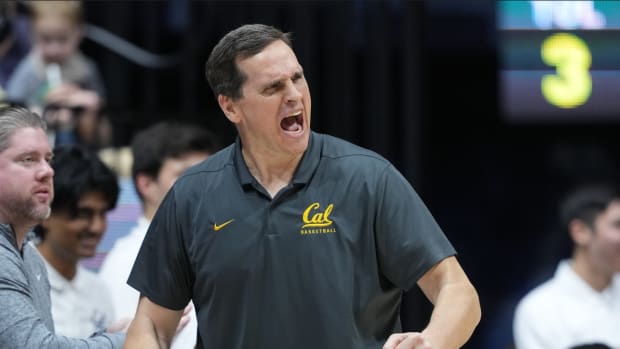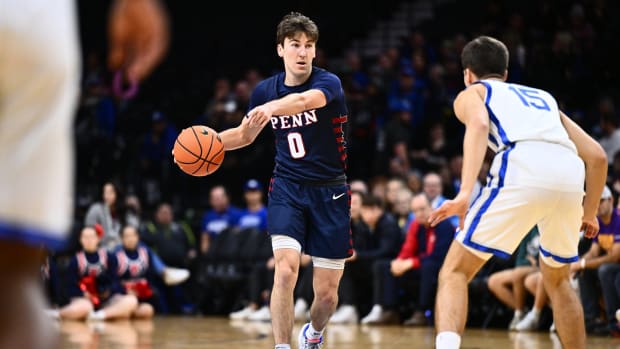Women’s Final Four Sets Up the Perfect Mix of the Game’s Past, Present and Future
MINNEAPOLIS — If you were tasked with designing a Final Four to bring together the history, present and future of the women’s game, you’d be hard-pressed to pick anything better than this.
On one side of the bracket are two standard-bearers. A pair of legends, they are the winningest coaches ever in women’s college basketball: Tara VanDerveer of Stanford (1,161 wins in 43 seasons) and Geno Auriemma of UConn (1,152 in 37). On the other side are two coaches who are building similarly iconic careers. Both transformative leaders, they have redefined success at their respective schools: Dawn Staley of South Carolina and Jeff Walz of Louisville.
In other words, one game will showcase two of the most iconic programs in the history of the sport, while the other will showcase two of the most compelling for the future—and the four teams collectively show off the best of the game right now.
That’s a set-up with plenty of fun parallels.
Ask Auriemma about VanDerveer and Stanford, for instance, and you’ll hear that his answer has been more or less the same for decades.
“I think like us, they haven't changed much over the years,” Auriemma said. “They still play the same style of play. When you watch them, you know exactly what you're going to get. There's no surprises when you play Stanford… They play hard, they play together, they play positionless most of the time, they shoot the ball great every year. It's the same Stanford team that I remember 25, 27 years ago playing around here. It's just different people, but it's the same.”
VanDerveer had much the same to say about Auriemma and UConn.
“We have been competing for a long time, playing against each other,” she said. “He's done a great job at Connecticut. They have had tremendous success. I've learned a lot from competing against them.”
The record between the two goes way back: UConn’s first of its many championships, in 1995, came after beating Stanford in the Final Four. (In a neat little twist of fate, that game was also played at the Target Center in Minneapolis, just like this one will be.) The two programs met again in the Final Four in 2009, ‘10 and ‘14, meaning that this will be the fourth straight decade in which the two have played each other with a trip to the championship on the line. And while UConn won each one of those previous Final Four match-ups, Stanford has perhaps its best chance yet to break that streak now, as the reigning champs.
In other words—there’s a lot of history between these programs. The other side of the bracket may not quite be able to match all of that (yet). But it has a recent track record that is just as compelling. Staley is at her second consecutive Final Four and her fourth in the last seven tournaments. Meanwhile, Walz has made sure every four-year player he has coached has gone to at least one Final Four. Each took over a program in search of direction: When Staley came to South Carolina in 2008, it was half a decade removed from its last tourney appearance, and when Walz came to Louisville in ‘07, it had never made the Sweet 16. Now? They’ve provided that direction and then some.
This meant that Staley, in search of her second title, could field questions Thursday about what it means to join the ranks of the elite. It meant that Walz could sit down and say that yes, the opportunity was special, but it was also “nothing new”—he knows how all of this works by now. It was hard to walk away without taking one clear point: If these two programs have felt for a long time like the future of greatness in the sport, well, the future is now.
Staley and Walz are notable, too, for the sense of community engagement they have instilled in their teams. South Carolina now leads the country in attendance; Louisville is regularly in the top five. Both make clear to fans that they have a chance to consistently be part of something special. There are players from both programs who speak highly of how it feels to play in these environments—in places that have transformed, just in their own short lifetimes, into hotbeds for the game.
“It's kind of crazy because you really feel the love in the community,” said South Carolina junior guard Brea Beal. “You can go to the store and run into somebody and they're like, ‘Oh, my gosh,’ just freaking out. It's like a family. That's the most important thing. You're playing in front of people that support you 100%.”
This group has history, it has rivalry, and it has considerable promise for the future. It’s hard to sum it up better than Staley did on Thursday:
“There are only four teams standing, and we’re very, very lucky to be matched up with each other,” she said. “So I’m looking forward to an exciting semifinals. May the best team win.”
More Women’s Final Four Coverage:
• The Story of Cheyney, and Coach C. Vivian Stringer, Is Largely Lost to History
• March Madness Faced a Gender Reckoning. But How Much Has Changed?
• Power Ranking the Teams in the Women’s Final Four

